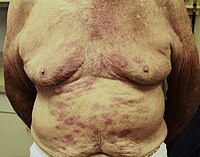
Photo from wikipedia
Although a disease is defined as rare when it has a prevalence of less than 1:2000, the overall prevalence of rare diseases in the population is greater than 1%. Among… Click to show full abstract
Although a disease is defined as rare when it has a prevalence of less than 1:2000, the overall prevalence of rare diseases in the population is greater than 1%. Among potential organ donors, a similar frequency is observed. To date, guidelines have not been established, and operational decisions have been made empirically, case‐ by‐case, based on the experience and expertise of clinicians. For this reason, the Italian Superior Health Council (CSS) has appointed a working Group to address “patients with a rare disease as potential organ donors,” with the aim of devising recommendations for the management of transplant cases in which the donors have a rare disease. This group evaluated 493 diseases (10% of all rare diseases, including over 95% of patients with a rare disease) to deliver a technical report dealing with the suitability of organ donation and transplantation, with a focus on the organs most frequently used, including kidney, liver, heart, lung, and pancreas. This work has made it clear that a rare disease “per se” does not contraindicate organ donation at all. Indeed, in donors affected by a rare disease, almost 80% of the organs are suitable for transplantation, approximately 7% are unsuitable, and approximately 14% are suitable as non‐standard with an acceptable risk.
Journal Title: Clinical Transplantation
Year Published: 2022
Link to full text (if available)
Share on Social Media: Sign Up to like & get
recommendations!